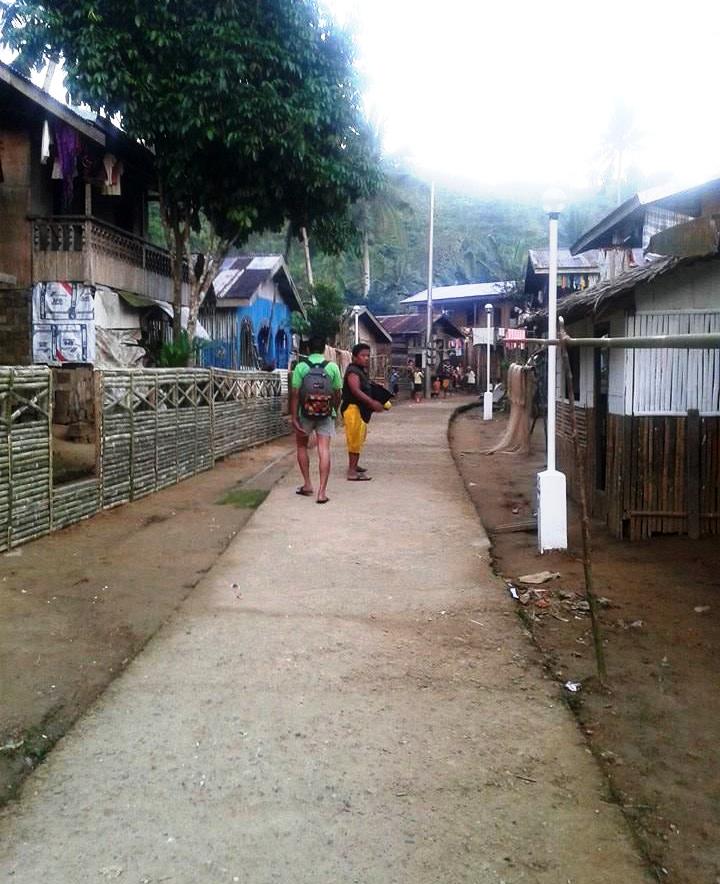
The nightfall in Barangay General Luna, the farthest barangay of Lope de Vega, has been the cause of terror in almost every home in the village.
Since the place is located in the most interior part of the Northern Samar town, distance from the poblacion area made it difficult to the locals to access basic social services. In order to reach the center of Lope de Vega, one must brave a risky boat ride for a maximum of two hours and 45 minutes or endure a perilous hike in the mountains for about four hours and fifteen minutes.
Most of the families in the community earn their living by abaca fiber making (kigi), copra, and through root crops and vegetable production but the poverty incidence of 87.7 percent is still high.
With only a population of 281 individuals, composing 69 families and 56 households, Gen. Luna could be considered one of the smallest communities in the municipality, where every resident knows everyone. But being the remotest barangay of the town, Gen. Luna has become vulnerable not only to poverty but as well as to conflict.
For almost 72 years, Nanay Warlita Agte would fear her family’s safety whenever dusk would cover the skies of Gen. Luna. For the small Lope de Vegan community, the night elicits the fear of the unknown, especially when there are no lamp posts to light their streets. In Brgy. Gen. Luna, it is not the children, but the grown-ups who are most frightened whenever the sun disappears. Their fear is anchored on something more real than things that go bump in the night.
According to Brgy. Captain Liberato Victoriano, crimes occurred more often in dark street corners of Gen. Luna. There was even a recorded incident where a man was beaten by an unrecognized group in the middle of the night. There were also rampant thefts of domesticated fowls. Worst of all, there was even murder.
This was confirmed by Warlita Agte, one of the residents in the community.
“Kun gab-i, nababaraka kami, kay diri namon naiimdan an mga nagkakasulod sa barangay, labi na gud kon nakabati kami hin storya nga may ginpatay na sa sapit nga barangay”. ”, she said, recalling the anxiety she and her family felt when they heard the news.
The disturbing increase in crime rate prompted the residents of Gen. Luna to choose the establishment of streetlights in their community as their sub-project through the Payapa at Masaganang Pamayanan (PAMANA) implementation of Kalahi-CIDSS, otherwise known as the Kapit-Bisig Laban sa Kahirapan Comprehensive and Integrated Delivery of Social Services, a program of the Department of Social Welfare and Development (DSWD) that seeks to help alleviate poverty using the community-driven development (CDD) strategy.
Kalahi-CIDSS targets the coverage of 136 municipalities in Eastern Visayas including the town of Lope de Vega.
PAMANA is the government’s framework for peace and development spearheaded by the Office of the Presidential Adviser on the Peace Process (OPAPP). The framework follows a converged strategy of resource allocation and utilization, and aims to sustain all ongoing governance and development initiatives in communities affected by past or ongoing conflicts.
Kalahi-CIDSS PAMANA works for the attainment of three major objectives: to reduce poverty, improve local governance, and empower communities by strengthening their capacities.
The installation of streetlights, which cost Php 317, 111.00, was the community’s choice to prevent and deter crime. Through the CDD approach, residents of Gen. Luna were empowered when they were given the opportunity to identify the most pressing needs in the community and come up with the solutions corresponding to the issue by choosing the type of sub-project that will answer the problem, as well as implement and maintain the said project.
Barangay Captain Victoriano reiterated that after the street lights were established, reports of crimes, such as theft and physical assault, were lessened. He remarked on the significant improvement on his constituent’s’ sense of security.
“Yana mahangaturog na kami hin waray na kahadlok ”, he said.
“Nagpapasalamat kami han DSWD ngan Kalahi-CIDSS ug PAMANA san paghatag sa amon sin higayon nga matagamtaman an masuna nga komunidad ngadto san mahimyang nga pamoroko. Diri la niyo ginpalaga an amon dalan, ginpalamrag gihap niyo an amon paglaum ” he added.
Jenalyn Espelimbergo, a PAMANA volunteer and a mother expressed her gratitude toward the completion of the sub-project. She said she is no longer afraid to allow her daughter to visit a classmate in the next street during evening for school-related queries. “Yana diri na ako mahahadlok kun nagawas it akon mga anak kun gab-i ”
Aside from the restoration of peace and order in the community, Kalahi-CIDSS and PAMANA have also restored the power of women to participate in the community.
Today, housewives in Gen. Luna are no longer confined within their houses. Ninety percent of these women have become part of the decision-making process in the community where they are given the opportunity to speak their minds. The emergence of women’s involvement is a positive response, owing to the program’s initiative to mainstream gender equality.
The women of Gen. Luna have become enthusiastic about the expansion of Kalahi-CIDSS into a national community-driven development program, given the many opportunities they anticipate will be given to them.
“Tungod sa Kalahi-CIDSS ngan PAMANA, nagkamay-ada kami aram sa pagpadalagan san proyekto sa barangay. Masisisring namon nga bulig kami siton nga streetlight. Diri la ngay-an kami pan-balay la. Akos ngay-an namon an pagbag-o! ”, Jenalyn proudly declared. #


